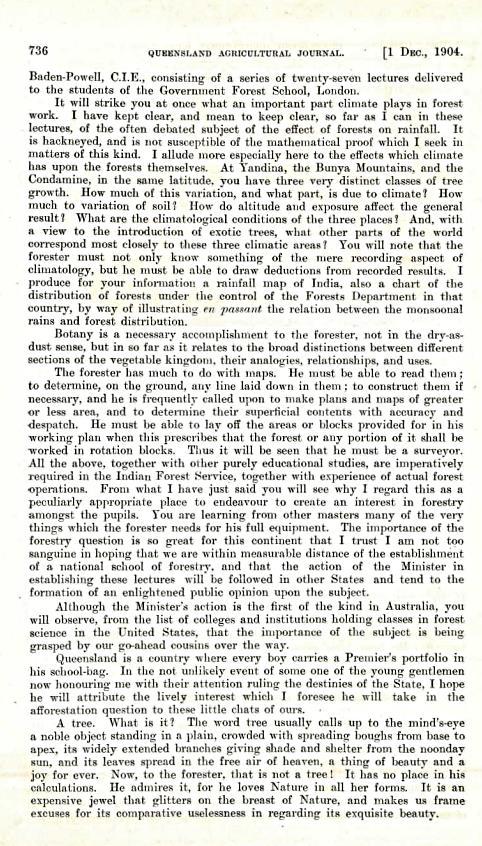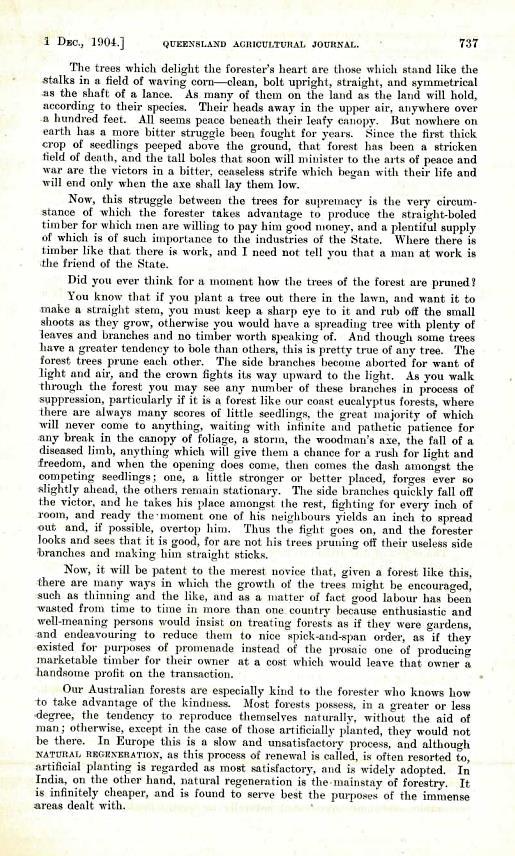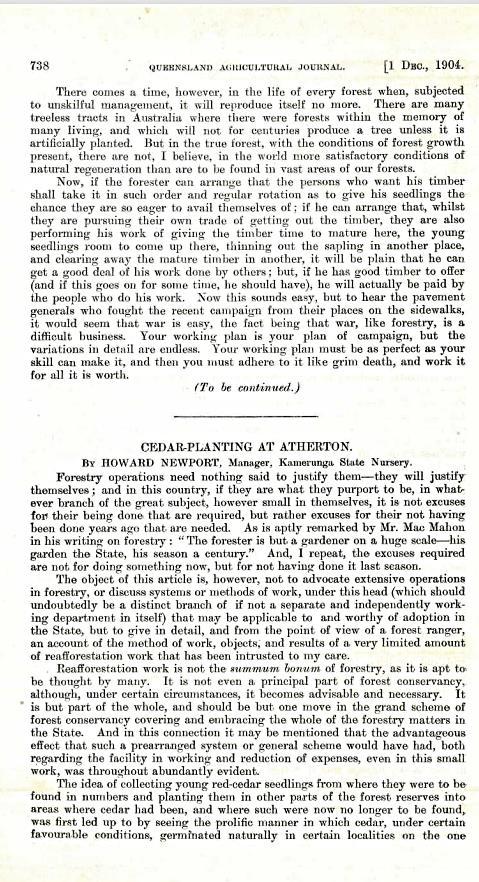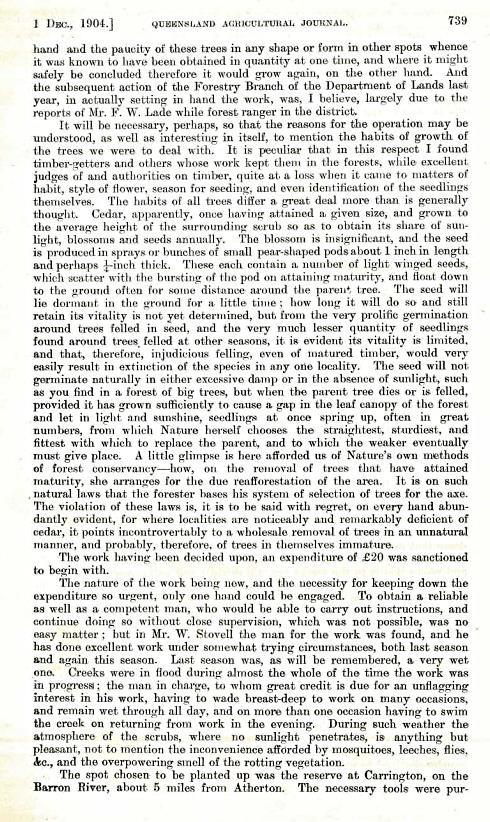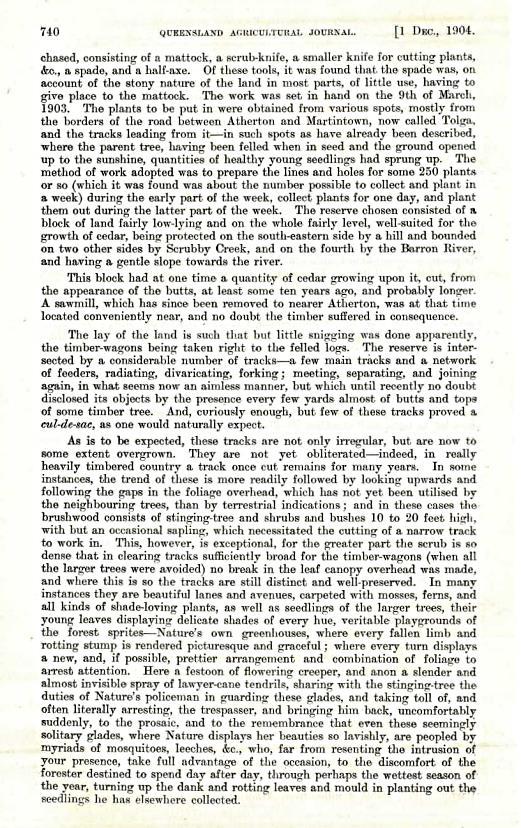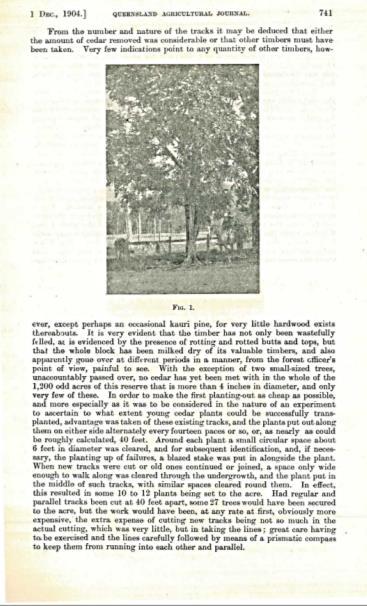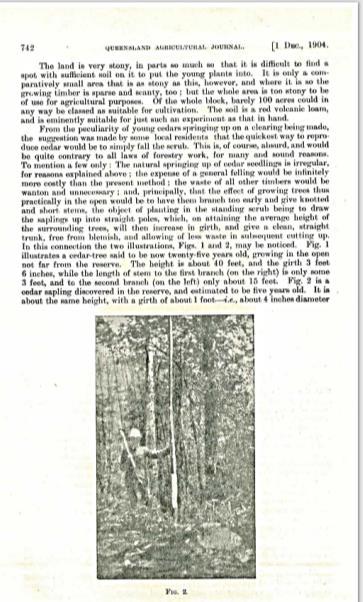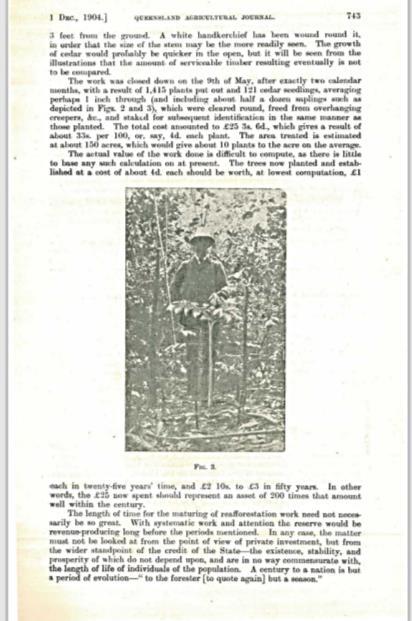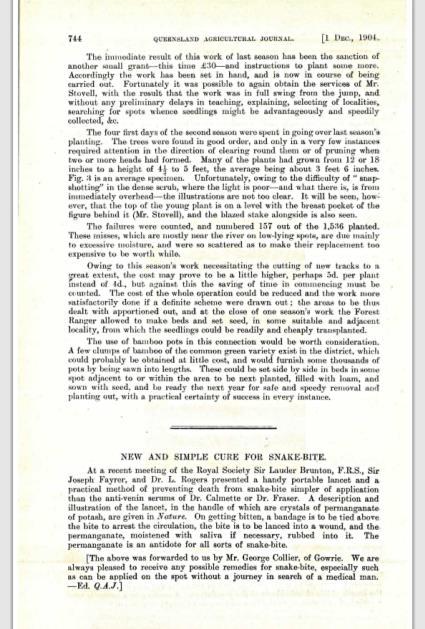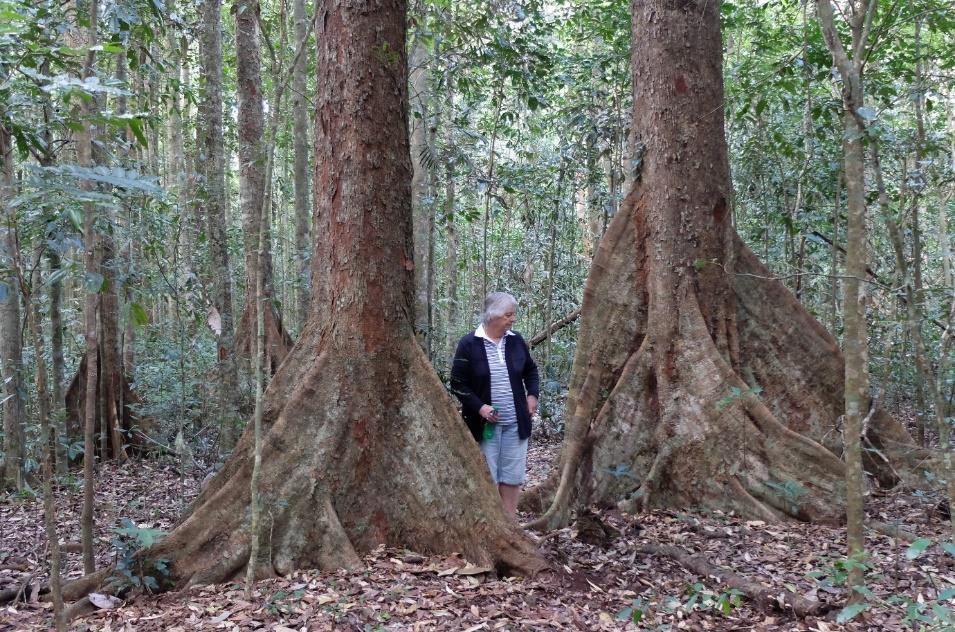
3 minute read
Queensland
from PNGAF MAGAZINE ISSUE # 9D4D of 15th March 2022 - global timeline forest tree plantations
by rbmccarthy
Queensland:
1914 planting of Red cedar in 2016. Photo credit Keith Gould.
Advertisement
Keith Gould38 provided the following history re the development of plantations of North Queensland Rainforest species.
The first planting in NQ was the cedar planting 1903 -1906 (See attached report in the 1904 Agricultural journal, pages 738-744). This planting program ceased after the 1906 year’s planting because of public opinion about the waste of Government money on tree planting when there was perceived to be such an abundance of natural forest.
A program was recommenced in 1911 with the establishment of a nursery and trial plantings of a whole host of species, some native and some exotic. Aside from cedar, the two most promising species to emerge from these trials were hoop pine and kauri pine.
As well as a great range of constructional hardwoods and some of the fine cabinet timbers in the world, Queensland was also blessed with a group of the best utility coniferous timbers in hoop (Araucaria cunninghamii), bunya (Araucaria bidwillii) and kauri (Agathis robusta) pines. But, growing as they did on the scrub soils most sought after for settlement, forest conservators from the first appointment in 1905 saw the major replacement for the supply of these soft timbers, which was rapidly being depleted, in exotic varieties of inferior quality, secured by importation in a manufactured state or from local plantations on land not capable of producing the indigenous varieties. From N. W. Jolly's appointment as head of the Qld Forest Service in 1911, the softwood plantation policy became two-pronged: maintain as much rainforest as possible for clear-felling and hoop pine replacement; and carry out extensive trials of exotic conifers over the State, particularly on sites where large areas might be ceded to forestry for the purpose.
In 1914 there was a sizable area clear-felled, burnt, and planted with red cedar. This planting still exists today (photo above). However, this planting saw the emergence of the cedar tip borer and further trials were carried out planting cedar under nurse crops to minimise tip borer impact.
38 Personal communication Keith Gould Queensland Forestry 27/12/2021
About the end of WW1, the planting program halted again – the Government was probably short of money at that time. It was recommenced in 1929 with the onset of the depression and the availability of labour from Government sponsored employment schemes. Some research plantings with red cedar continued, but the routine plantings were all hoop and kauri.
Planting ceased again with the onset of WW2.
In the 1950’s research commenced on under-planting logged (and sometimes silviculturally treated) rainforest. A variety of species were tried but Qld Maple (Flindersia brayleyana) emerged as the main species of promise, and it was used extensively in subsequent routine operations. There were substantial areas of rainforest underplanted with Maple during 1950 –1970.
Following the world heritage listing of the NQ Wet Tropics in 1988 two more planting schemes arose – the Community Rainforest Reafforestation Program (CRRP) and the Wet Tropics Tree Planting Scheme (WTTPS). Each of these two planting programs had defined objectives which were distinctly different. The WTTPS was planting purely for environmental purposes and aimed to establish a rainforest ecologically as close as possible to what was thought to exist on the site before land clearing. The CRRP had multiple objectives one of which was to establish a plantation timber resource to replace the resource of rainforest timbers locked away in the World Heritage Listing.
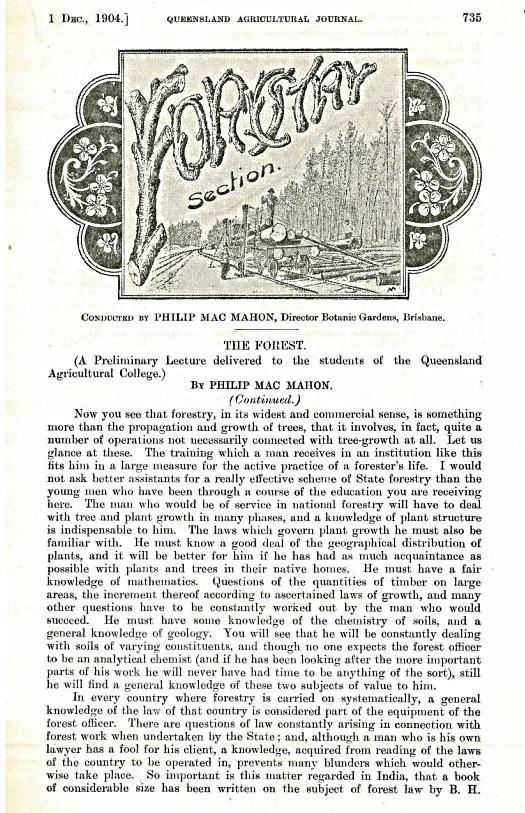
1904 Agricultural Journal pages 738744.
